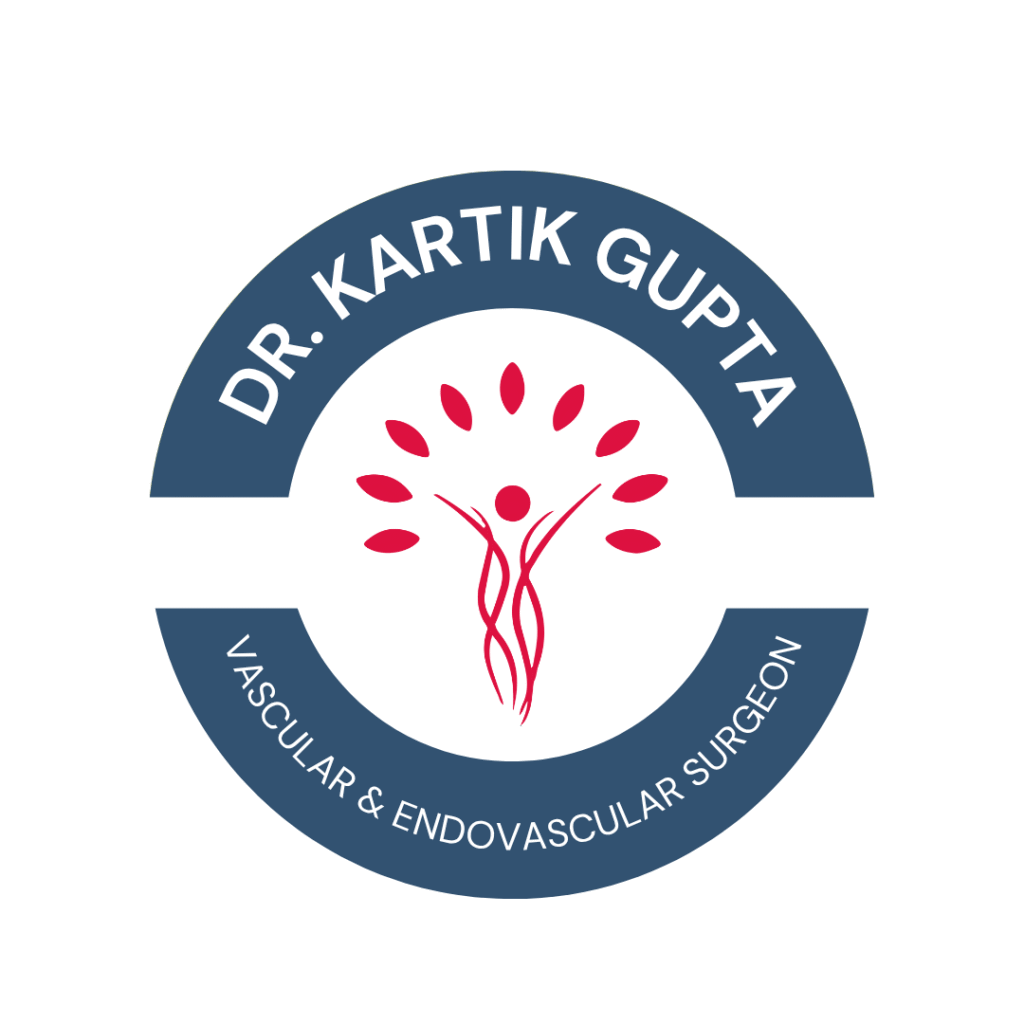Wondering about the vascular diseases we treat every day?
Here are some common vascular conditions, often silent at first, but successfully treated with timely diagnosis & care.
Venous Diseases

Varicose Veins
Swollen, tortuous veins in the leg that are often visible on the skin.

Varicose Veins
Patients often notice bluish-purple, bulging veins on their legs that ache or feel heavy. These are called varicose veins, and they occur when the one-way valves in the leg veins become weak, causing blood to pool instead of flowing back to the heart.
They’re more common in people who stand for long hours, during pregnancy, or if there’s a family history.
Endovascular treatments today are quick and minimally invasive—we close or remove the damaged veins without any incisions or scars.
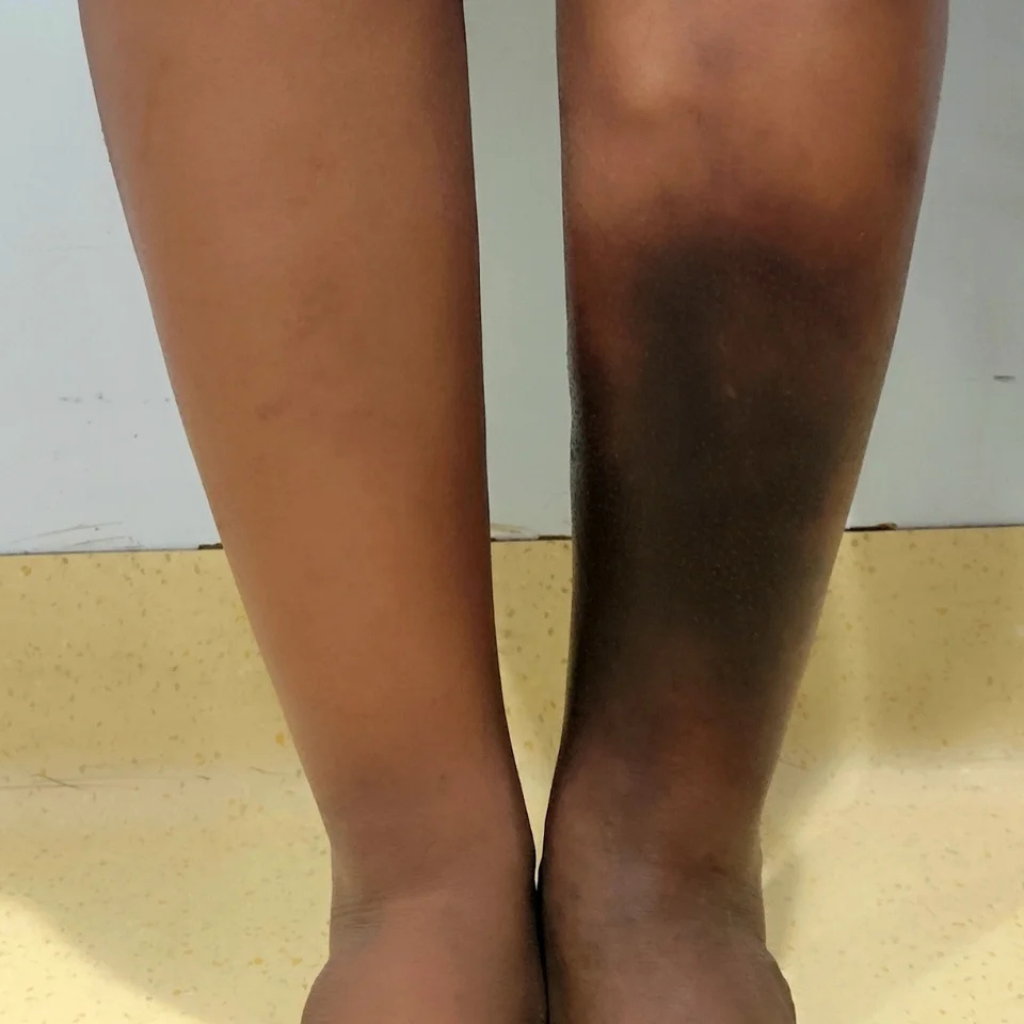
Acute Deep Vein Thrombosis (DVT)
Formation of blood clots (thrombus) in the deep veins, often in the legs.

Acute Deep Vein Thrombosis (DVT)
As the name suggests, DVT is a blood clot (thrombus) that forms in the deep veins, most commonly in the legs and ‘acute’ means the symptoms appear suddenly.
Early treatment is crucial because a part of the clot can break off and travel to the lungs, leading to a life-threatening condition called pulmonary embolism. If you notice swelling, pain, or tightness in just one leg, do not ignore it.
With timely diagnosis, medication, or advanced clot-removal techniques, we can prevent serious complications and save lives.
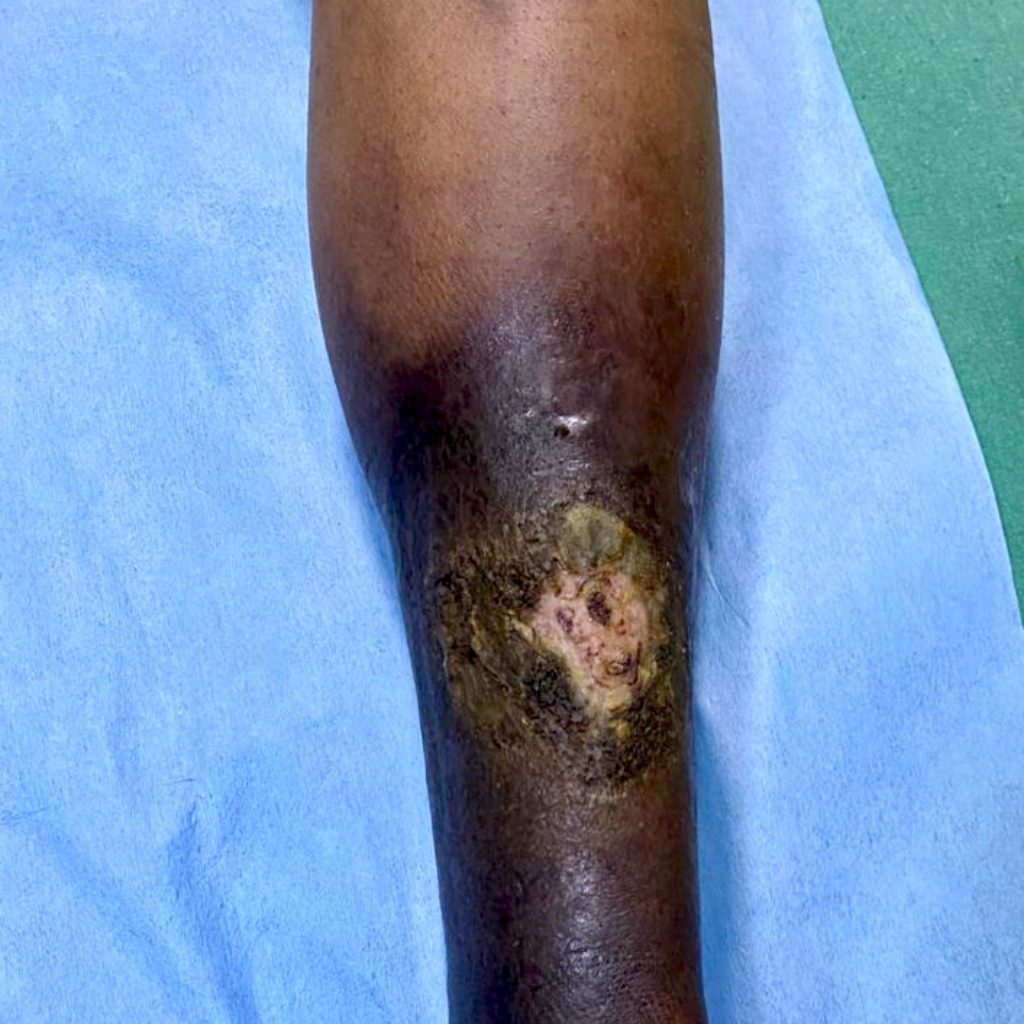
Chronic DVT & Post-Thrombotic Syndrome
Sometimes, even after a clot in leg (DVT) is treated, the deep veins don’t recover fully.

Chronic DVT & Post-Thrombotic Syndrome
Sometimes, even after a clot in leg (DVT) is treated, the deep veins don’t recover fully. The valves inside the veins may be compromised, leading to long-term symptoms like leg swelling, heaviness, pain, or skin changes. This is known as Post-Thrombotic Syndrome (PTS).
PTS can lead to skin darkening, thickening, or even non-healing ulcers. With regular follow-up, compression stockings, lifestyle changes, and in selected cases, specialised procedures, we can reduce discomfort and prevent further damage.
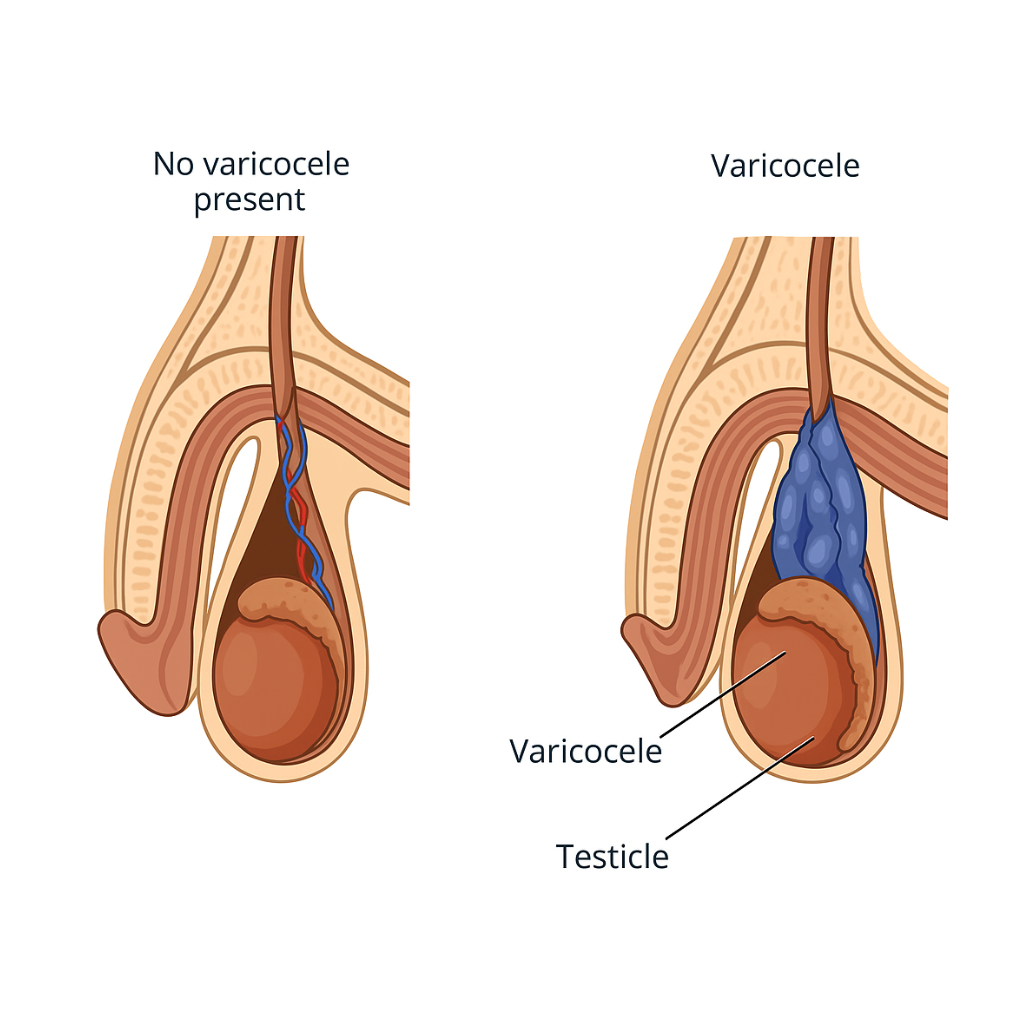
Varicocele
Enlargement of the veins within the scrotum, often causing pain or fertility issues.

Varicocele
A varicocele is like a varicose vein in the scrotum. It happens when the veins inside the scrotum become enlarged due to poor blood flow, often leading to a feeling of heaviness, mild pain, or visible swelling on one side.
While many varicoceles are harmless, they can sometimes cause discomfort or affect male fertility. If needed, we perform a single-puncture procedure that safely seals the faulty veins and restores normal blood flow, improving both comfort and sperm health.
Arterial Diseases
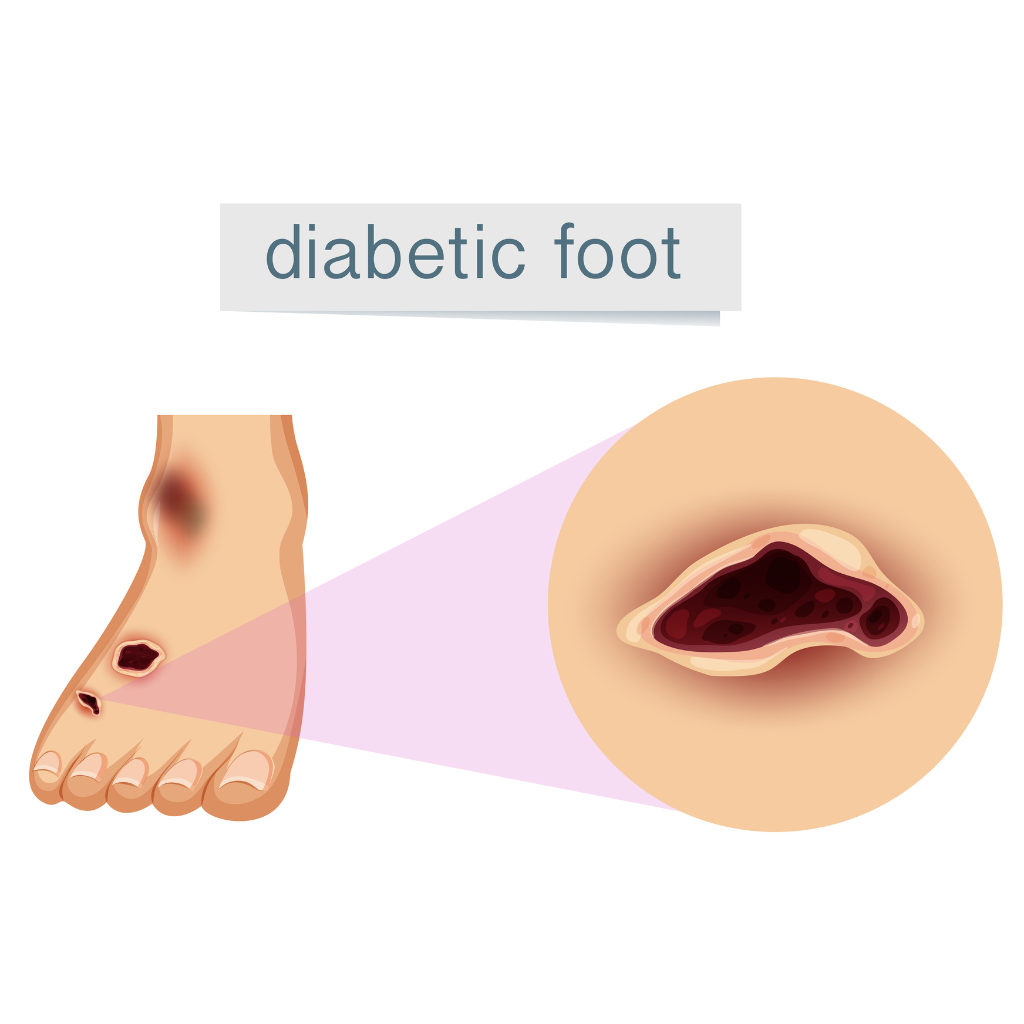
Diabetic Foot & Gangrene
Poor circulation and nerve damage leads to foot ulcers that do not heal for more than a month.

Diabetic Foot & Gangrene
In people with diabetes, high blood sugar damages both nerves and blood vessels. This reduces sensation in the feet (peripheral neuropathy), so small cuts or injuries often go unnoticed. Combined with poor healing, this can lead to silent infections that only become painful once serious.
If blood flow remains poor, especially to the toes, tissue starts to die, often seen as blackening of the foot, toes, or nails. This is known as gangrene. With early diagnosis and procedures to restore circulation, we can often stop the damage and save the limb.
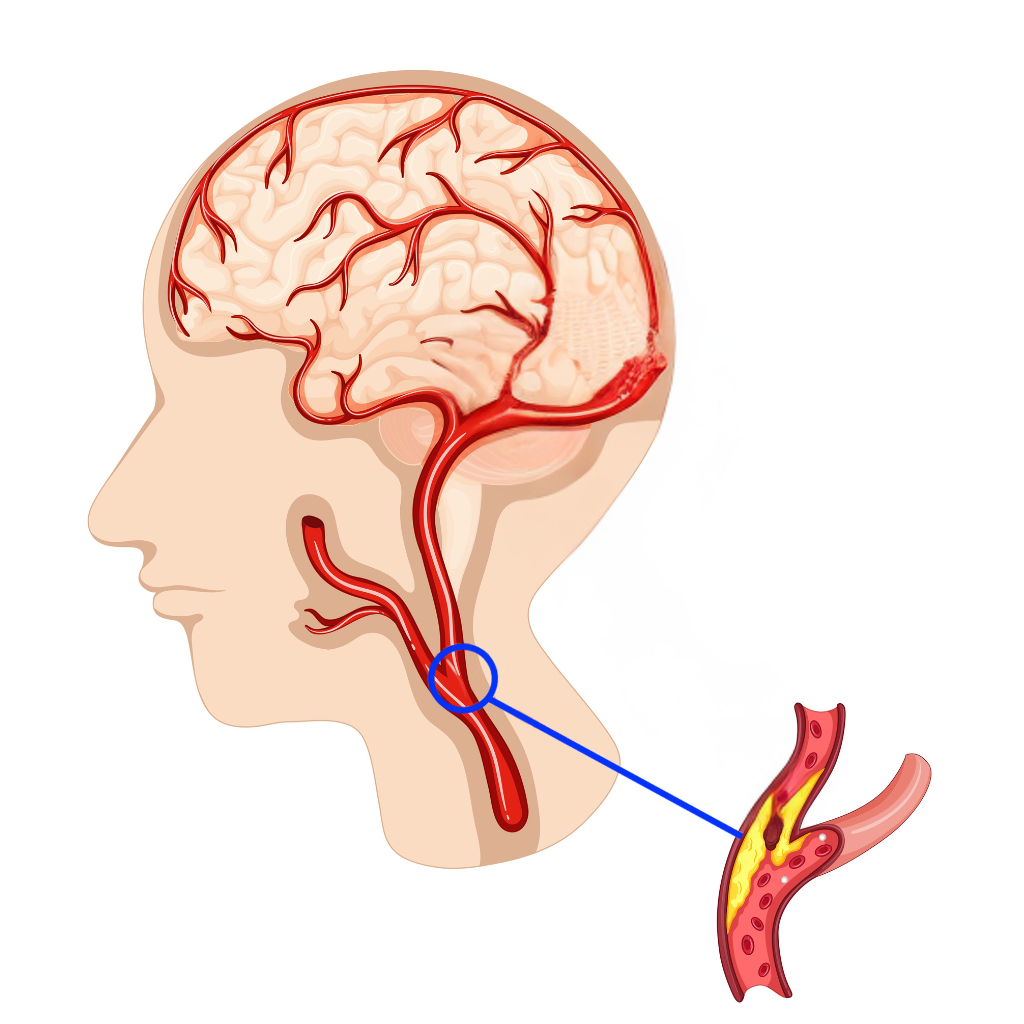
Carotid Artery Disease
Narrowing or blockage of the carotid arteries (major vessel in the neck), which can lead to strokes.

Carotid Artery Disease
Carotid arteries are the major blood vessels in your neck that supply blood to the brain. When these arteries become narrow or blocked due to plaque buildup, the risk of stroke increases, even before any warning signs appear.
Sometimes, the only clue is a brief loss of vision or stroke-like symptoms. A simple scan can detect the narrowing early. Based on standard treatment guidelines, we can often remove the blockage without requiring a stent, greatly reducing your risk of stroke
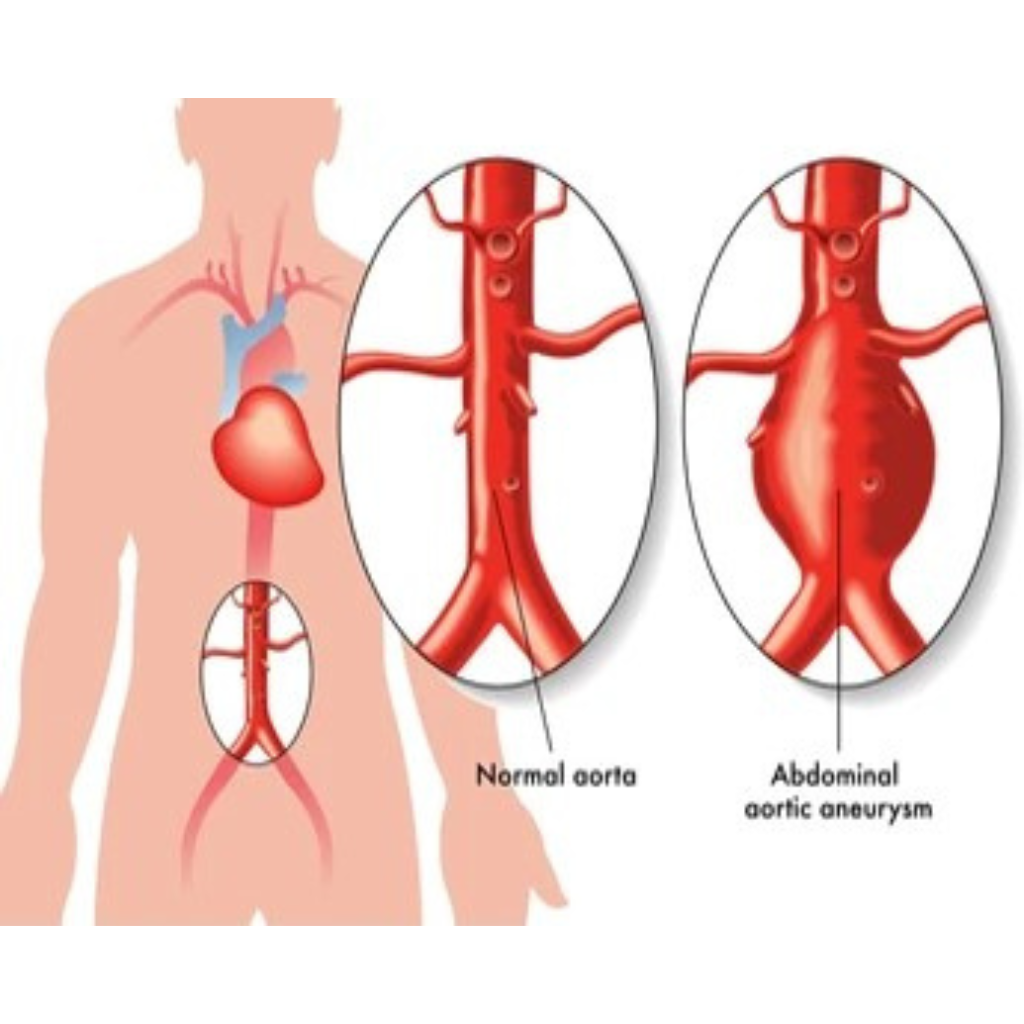
Aneurysms (Aortic or Peripheral)
Bulging or ballooning of the artery due to weakening of the wall.

Aneurysms (Aortic or Peripheral)
An aneurysm is a dangerous bulge at a weak area in the wall of an artery, like a balloon that’s slowly stretching out. It can grow silently over time without causing any symptoms, but if it bursts, it can lead to life-threatening internal bleeding.
Aneurysms are often found during scans done for other reasons. Depending on its location and risk, we can closely monitor its size or plan a repair using single-puncture endovascular techniques. Early detection and timely intervention can be life-saving.
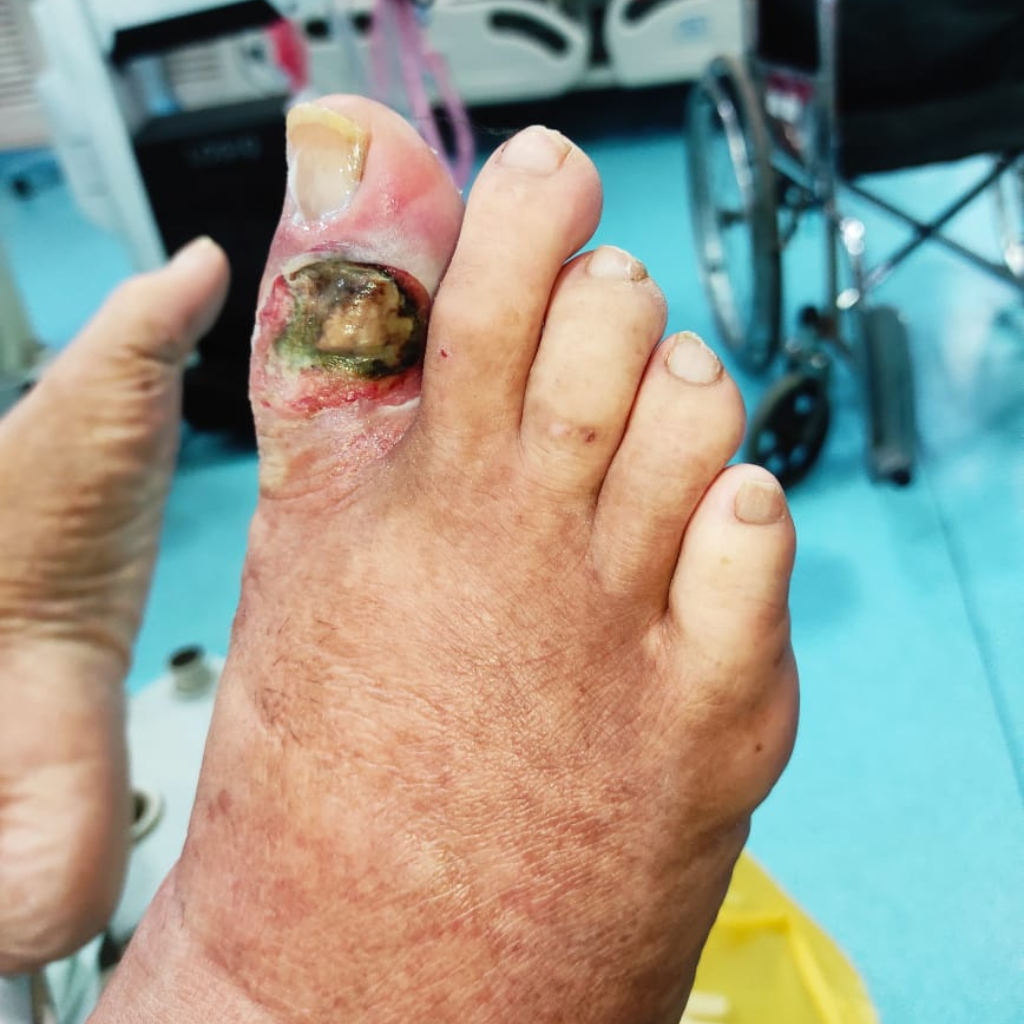
Peripheral Arterial Disease (PAD)
Narrowing of the artery in the limbs reducing blood flow.

Peripheral Arterial Disease (PAD)
Arteries that carry oxygenated blood to your arms or legs can get blocked due to plaque or cholesterol buildup. This is called Peripheral Arterial Disease (PAD).
It reduces blood flow, especially when the demand increases—like during walking—and may cause leg pain, cramping, or fatigue, which gets better with rest. Many people mistake these symptoms for ageing or joint problems. But PAD is a warning sign of poor circulation, which, in severe cases, can even lead to a complete shut-off of blood supply.
Early diagnosis allows us to restore circulation through lifestyle changes, medications, or minimally invasive angioplasty, helping you walk pain-free again.
Procedures
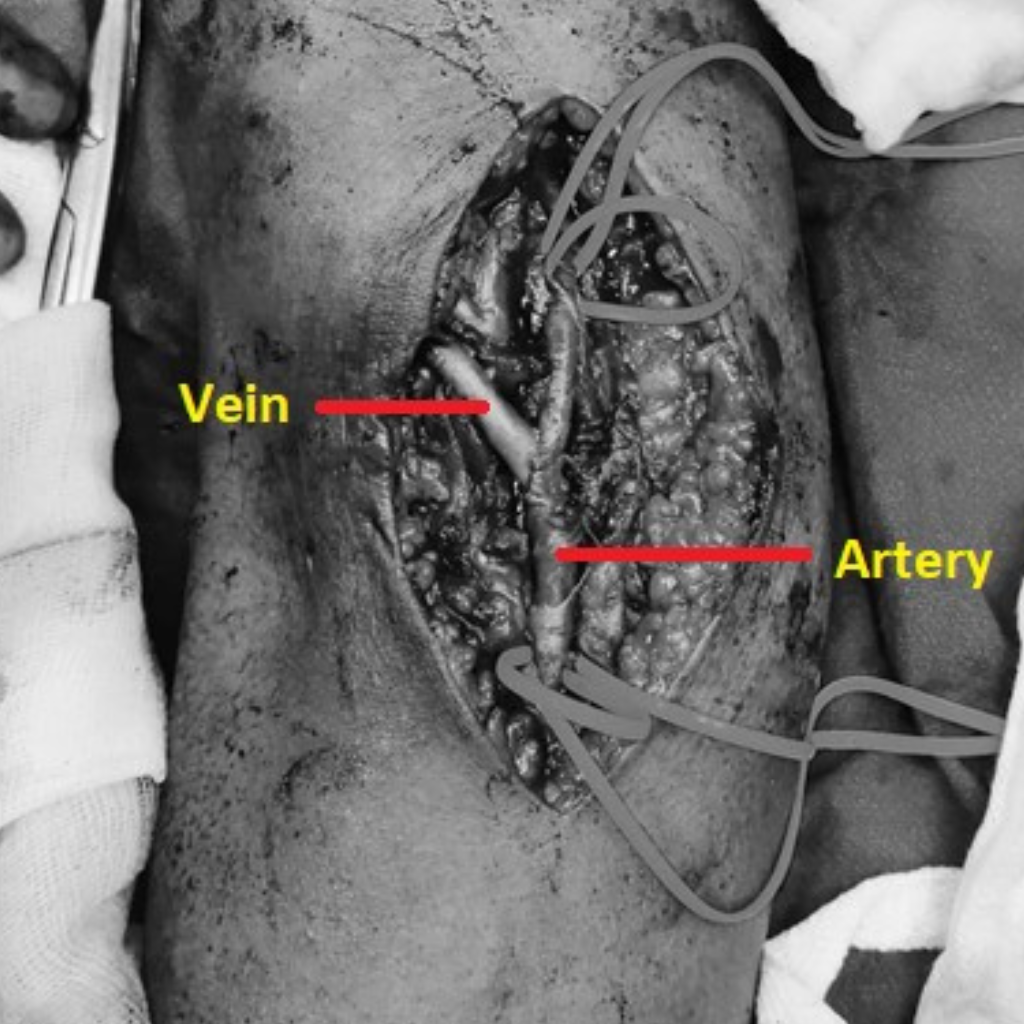
AV Fistula for Dialysis
Artery-vein (AV) connection created surgically for a stable long-term dialysis access.

AV Fistula for Dialysis
For long-term dialysis to work effectively, doctors need a safe and reliable way to access your bloodstream. An AV fistula provides a strong, natural access point that can be used repeatedly.
An arteriovenous (AV) fistula is created through a small surgery, connecting an artery and a vein – usually in the arm, or sometimes in the leg. This allows steady blood flow during dialysis.
When created by the right specialist, an AV fistula lasts longer, reduces the risk of complications, and avoids the need for repeat procedures or fistula failure.
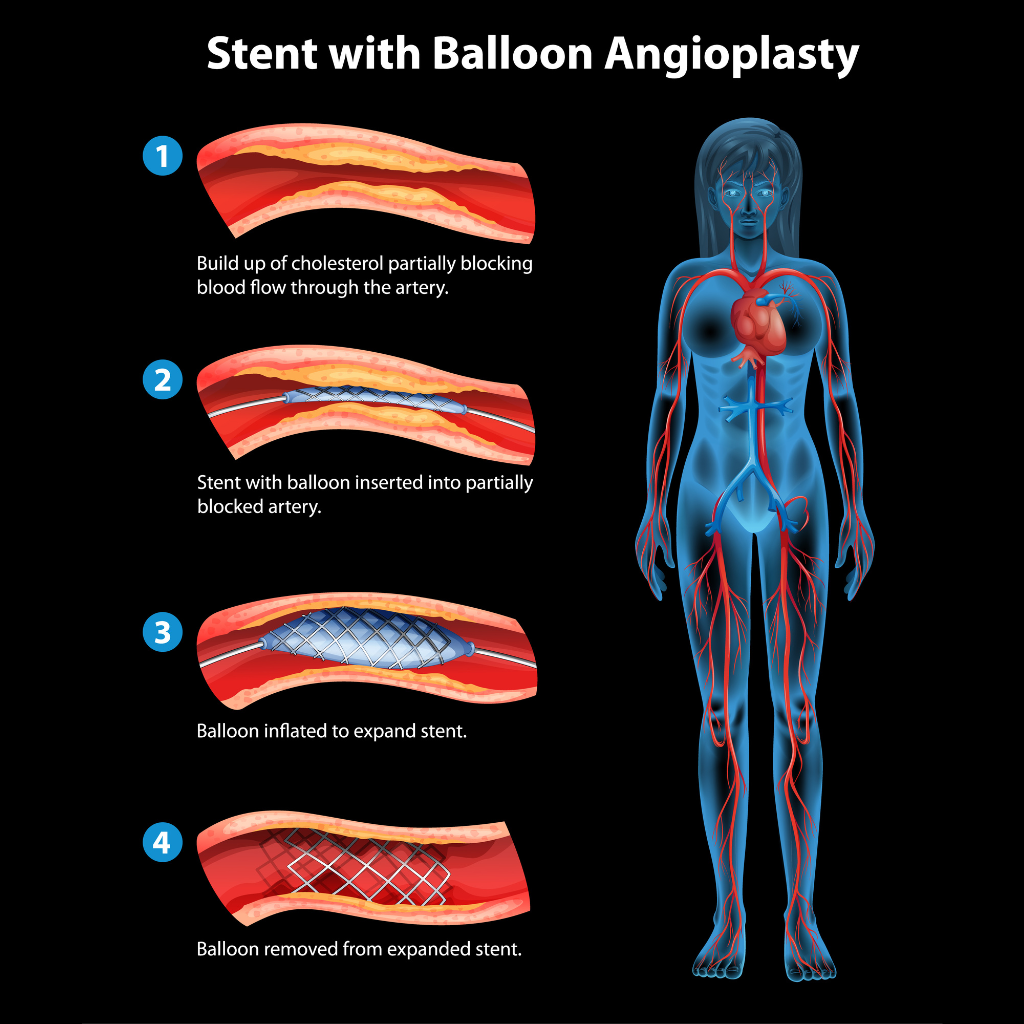
Peripheral Angioplasty
Narrowed arteries are opened using a balloon &/or stent

Peripheral Angioplasty
When arteries in your legs get blocked, blood flow is reduced, causing pain while walking short distances and wounds or ulcers that don’t heal for weeks.
Peripheral angioplasty is an endovascular procedure done through a single puncture. A small balloon is used to open narrowed arteries and improve blood flow — similar to an angioplasty done for the heart. A stent may be placed to keep the artery open.
This relieves leg pain, helps ulcers heal faster, and reduces the risk of serious complications like amputation or limb loss.
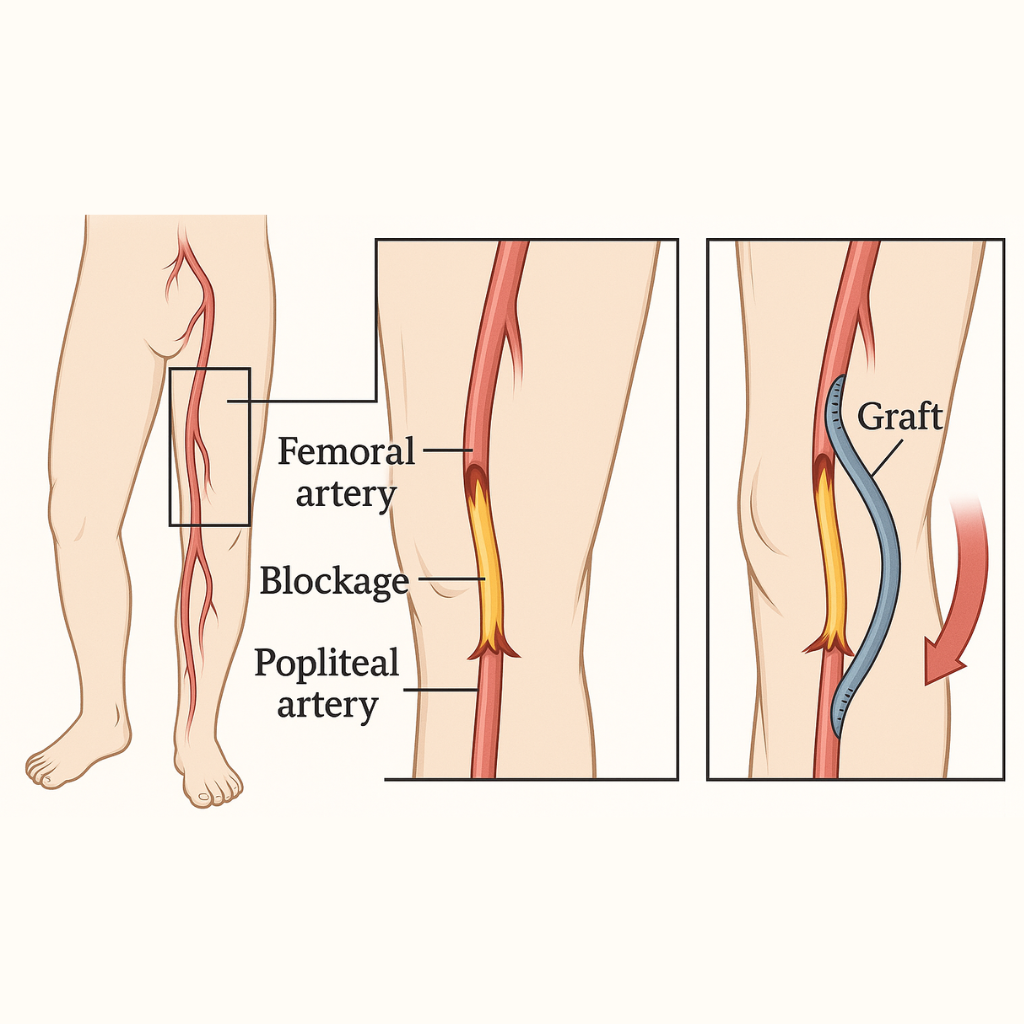
Peripheral Bypass
Alternate blood flow is created to bypass blocked arteries

Peripheral Bypass
When arteries in your legs are completely blocked, blood cannot reach your foot, causing severe pain or blackening of toes & nails (gangrene).
Peripheral bypass surgery goes around the blockage to create a new path for blood flow using your own vein or an artificial graft.
This restores blood supply, relieves pain, helps wounds heal, and prevents amputation. This procedure may be recommended when a peripheral angioplasty is not possible or has not worked.
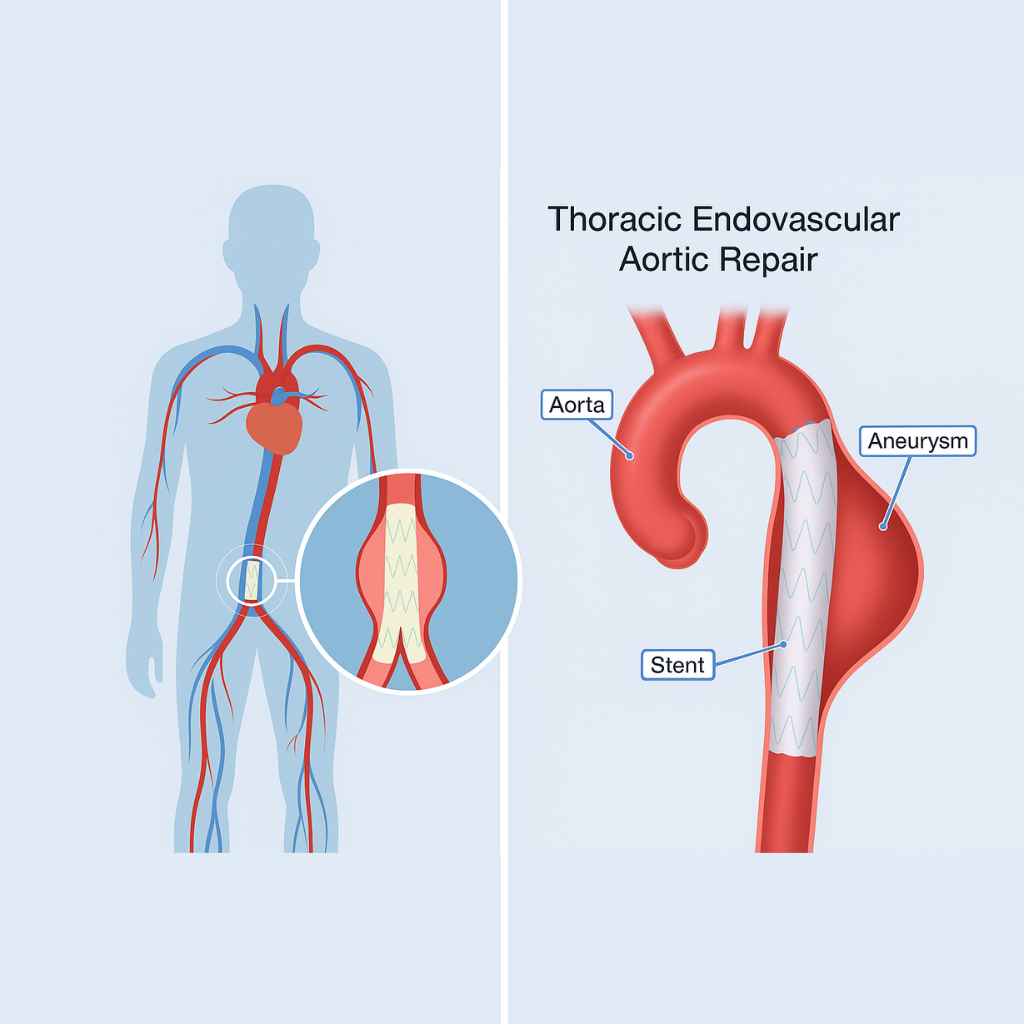
Endovascular Aneurysm Repair (EVAR)
A stent graft is used to repair an aneurysm & prevent rupture

Endovascular Aneurysm Repair (EVAR)
A dangerous bulging (aneurysm) formed at a weak spot in the artery wall can cause life-threatening internal bleeding if it ruptures.
It is repaired by placing a stent graft to support the weak area and prevent rupture. This procedure, called Endovascular Aneurysm Repair (EVAR), is performed through a single puncture.
It causes less pain and allows quicker recovery and a shorter hospital stay compared to open surgery.
- Varicose Veins
- Deep Vein Thrombosis
- Diabetic Foot
- Peripheral Arterial Disease
- AV Fistula
- Endovascular
Aneurysm Repair - Carotid Endarterectomy
Phone: +91- 9270292937
Email: drkartikvascular@gmail.com
Address: Swasthyam Hospital, 97/98, Wardha Rd,Near Sai Mandir, Vivekanand Nagar, Nagpur, Maharashtra 440015

